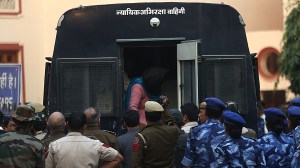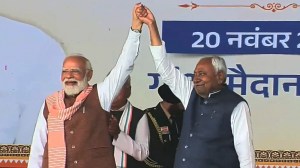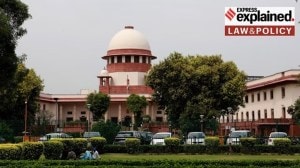P. Vaidyanathan Iyer is The Indian Express’s Managing Editor, and leads the newspaper’s reporting across the country. He writes on India’s political economy, and works closely with reporters exploring investigation in subjects where business and politics intersect. He was earlier the Resident Editor in Mumbai driving Maharashtra’s political and government coverage. He joined the newspaper in April 2008 as its National Business Editor in Delhi, reporting and leading the economy and policy coverage. He has won several accolades including the Ramnath Goenka Excellence in Journalism Award twice, the KC Kulish Award of Merit, and the Prem Bhatia Award for Political Reporting and Analysis. A member of the Pulitzer-winning International Consortium of Investigative Journalists (ICIJ), Vaidyanathan worked on several projects investigating offshore tax havens. He co-authored Panama Papers: The Untold India Story of the Trailblazing Offshore Investigation, published by Penguin. ... Read More
‘Let growth have weight in monetary policy’
Arvind Virmani, chief economic advisor, Ministry of Finance, takes an objective view of the rapidly changing economic scenario in India in the global context. In an interview with P Vaidyanathan Iyer, he says the weight for growth while reviewing monetary policy has clearly increased vis-à-vis inflation. Excerpts:

Has fiscal deficit ceased to be an over-riding concern now?
When inflation was accelerating, we had analysed that there was a global cost-push element. There was some argument then that if the fiscal deficit was more tightly controlled, this would give more space for monetary policy to balance inflation and growth concerns. Now after the global crisis, there are two positives for India: there is no direct effect and oil prices have plunged. The negatives are on the equity front and the general uncertainty that affects investments.
One has to be a bit more concerned on the potential slowing of investment growth and its impact on demand. The macro balances are changing in such a way that fiscal deficit has become less of a concern now. It is felt that an increase in fiscal deficit can partly offset the decline in private investment. In the medium-to-long term, however, it will be good to get back to the fiscal path we have chosen.
Despite the cuts in cash reserve ratio and repo rate, companies continue to complain of lack of credit. Also, the nature of transactions in the repo and the reverse repo window is confusing.
One has to distinguish between the short-term and the medium-term phenomena. There was a specific situation from the middle of September to October, before rate cuts, where the inter-bank rate was way above the repo rate. This clearly indicated a liquidity issue. This has been addressed. The immediate effect is inter-bank rates have dropped below 9 per cent.
Now, the medium-term issue. Monetary policy objectives are dual in India — of growth and inflation — and there is a changing relative importance of these two factors on the policy. Given the fall in oil and commodity prices, the weight that the monetary policy had to give for inflation had reduced because the negative signals on the industrial output front had increased. So, the issue is the change on the monetary policy stance. Both the lenders and borrowers are not sure how the monetary policy will evolve in the days to come. It will take some time for them to take stock of the change and adjust. So, there will be apprehensions in the short-term.
For people to have certainty, the change in monetary stance must continue…
The weight is changing, and has probably changed. The weight for inflation till, say two months ago, was different. Now, we can be surer inflation will be down to single digit by December-end. What will happen to policy will depend on what the RBI’s judgement is. But, clearly the weight is changing.
What about capital outflows, the impact it has on rupee. The RBI intervenes in the foreign exchange market by selling dollars to hold the rupee and in the process sucks out rupee liquidity…
I don’t want to comment on RBI’s actions. Because of the global problem, in the US particularly, lack of confidence and liquidity, FIIs are trying to increase liquidity by selling assets —equity is easy to sell — and taking funds back to their country. This has an extra contribution to the exchange rate. When you look at the trade deficit, what we are seeing is data for the first and second quarter, and this is history. You will see the data changes only in the third quarter, which will come much later. Also, the dollar is appreciating, that is being missed by many. Till October (Friday last), the dollar had appreciated in October over July by 10 per cent. The rupee had depreciated by 10.8 per cent during the same period. In a manner of speaking, you could say it is only 0.8 per cent which could be due to India-specific factors.



- 01
- 02
- 03
- 04
- 05





























